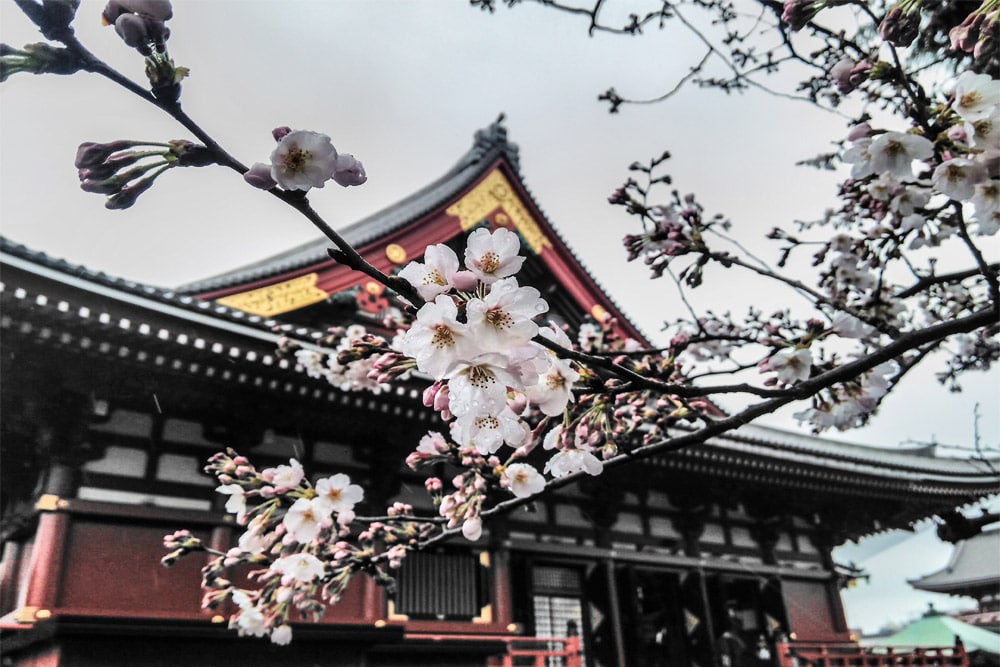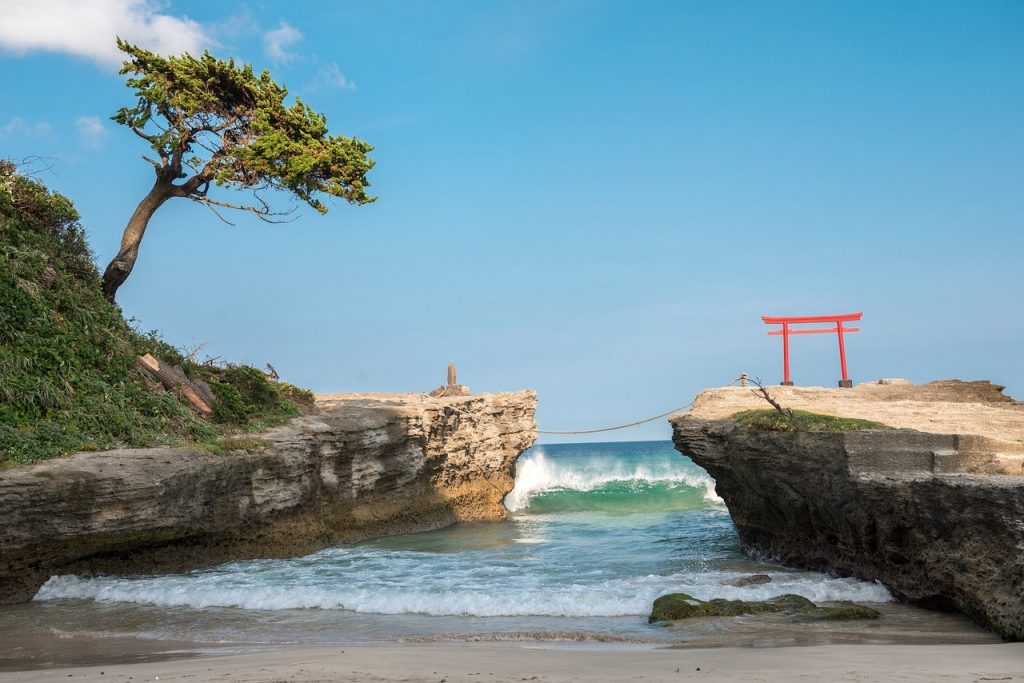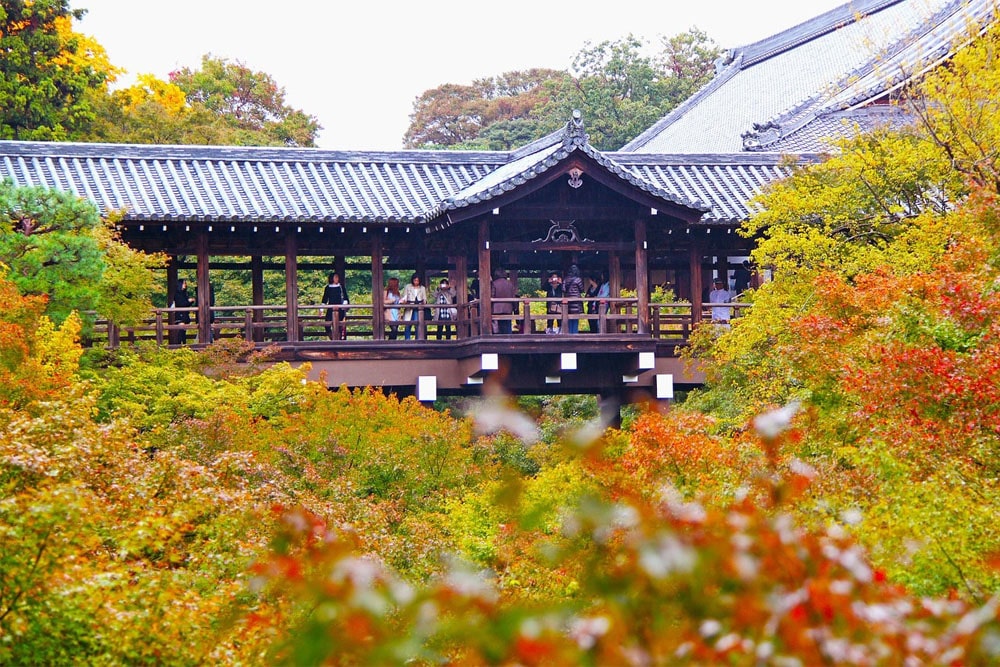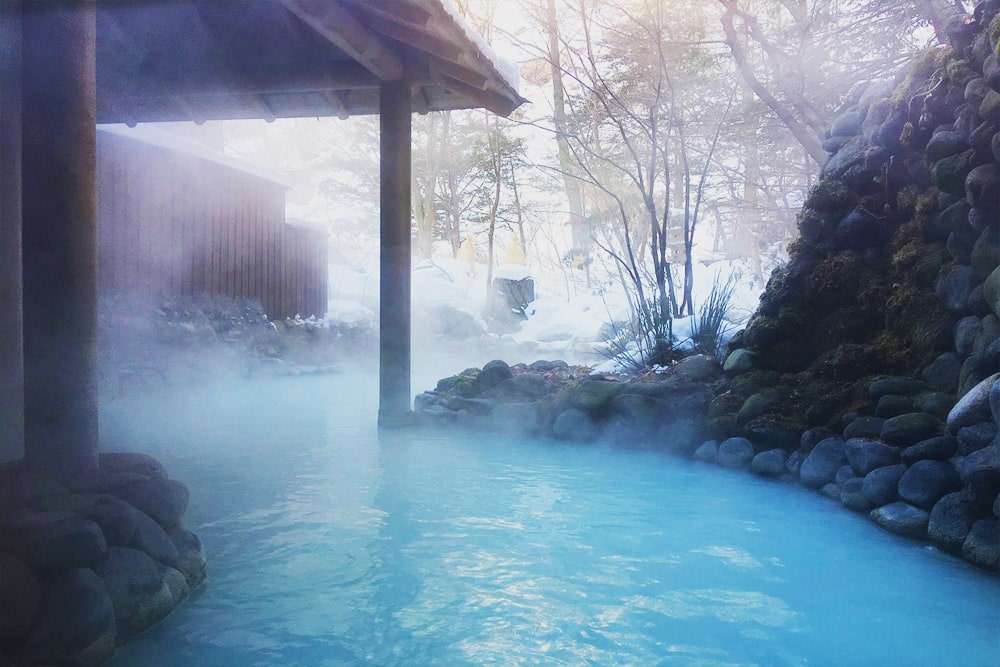Well there is no real easy answer to that question, as each season offers a little something for everyone. Instead of asking “When is the best time to visit Japan”, you should be asking “What season offers the best experience for me?”.
Spring

Spring, as most people should know, is when the Sakura, or Cherry Blossoms, bloom for a few short weeks, typically around mid-late April. This is when tourism in Japan is at its peak as millions from around the world come to enjoy what Japan has to offer while the Cherry Blossoms are in bloom. As such, the demand of hotels increases and it can be a little more expensive to book a good hotel during spring, particularly around April. The weather in spring however is quite nice, not too hot/humid, but also not too cold.
Shorts and pants are appropriate wear for the weather in spring, but carrying a light sweater or jacket is also a good idea. Spring is a good season to visit for those who like to get out and about shrine hopping or going for short hikes in the mountains.
Summer
The Suns out in full strength, with temperatures reaching mid-high 30’s (Celsius) on average, with an additional humidity along coastal areas of Western and southern Japan. Tokyo is no stranger to the heat as well. However, with this heat, comes the best time to scale the world-famous Mt. Fuji. Hit the beaches, visit amusement parks, and just enjoy being outside. In Summer, you do have to be careful of heat and sun exposure, so if you are going out shrine hopping, or hiking, make sure you have plenty of fluids.

Japan also has quite a few ice cream shops which skyrocket in popularity during the warmer months, so cool off with some unique flavours of Ice cream, like Gold Foil or Matcha (Japanese Green Tea). Tourist attractions are open for longer so you can take your time and just relax. Summer also has massive summer festivals with enormous firework displays that put new year’s displays globally to shame. However, with the summer heat, Typhoons and violent thunderstorms are common and may put a damper on some of your plans – Make sure you are aware of the weather forecasts and be prepared to keep yourself entertained while it pours with rain. Tourist density during summer is medium, but with the Olympics coming up in 2020, there is going to be a massive influx of tourists for that.
Are you planning a trip to Japan soon? Then you really should consider purchasing a JR Rail Pass, especially if you are planning on hitting all the major tourist cities like Tokyo, Kyoto, Osaka, Hiroshima, and Sapporo.
The JR Rail Pass makes getting around the country easy, and can save you several hundreds in travel expenses. All you need to do is just show your pass at the ticket gate, and you have access to any and all JR rail lines across the country, and not just the standard commuter trains, but luxury trains, and even the world famous Shinkansen (Bullet Train). A JR Rail Pass is an essential item for any visitor to Japan. Buy your pass today by clicking here now!
Autumn

Autumn is arguably the most underrated season to visit Japan in. As stated by many foreigners who live in Japan, Autumn is so much better than spring. You don’t have massive crowds of people, the weather is nice, and the autumn foliage is far more diverse than the colours of spring. Autumn is the best time to explore temples and shrines as most of them – the ones out of the main cities – are typically in wooded areas and offer up some of the most beautiful scenery in the country.
The weather is far more stable in Autumn, as the temperatures will be quite mild until late November / December. You can expect to see less tourists than summer. Early autumn is the best time to go hiking and explore the areas outside of the tourist cities. We do highly suggest making your next trip to Japan during the Autumn as it truly is the best time to not only visit Japan, but to also live in Japan.
Winter
Japan is actually a winter paradise, with the city of Aomori setting world records for the highest annual snow falls, with approximately 5-10 Meters of snow over the year. Ski Fields are plentiful in the mountainous terrain of Japan, and there is no better feeling than sitting in an outdoor hot pool at a traditional Japanese Ryokan during the winter, with the steam rising off the water and the snow gently falling around you. Around the coasts and major cities, you can expect to have a pretty mild winter, with the high usually reaching about 10-15° over the day.

But you certainly can still get snow in Osaka, Kyoto or Tokyo on colder days and mornings. The best thing about winter is that lines and tourist density are very small, so you can just enjoy Japan without having to worry about running to thousands of sweaty people as you might expect to see in some other months. While some amusement parks still operate over winter, the hours are reduced but the lines will be much shorter. Daylight hours are also significantly shorter, with it getting pitch black outside by sometimes 5:30pm in southern regions and by about 4:30-5:00pm in northern regions.
While we have stated that in our opinion, Autumn is the best time to visit Japan, please keep in mind that these are only our suggestions based off our experience. We go around Japan and see a lot of things every day, and we do feel that Autumn is the best time to do our job, but each season has something to offer for everyone. So, your best season to visit Japan might vary from our suggestion.

